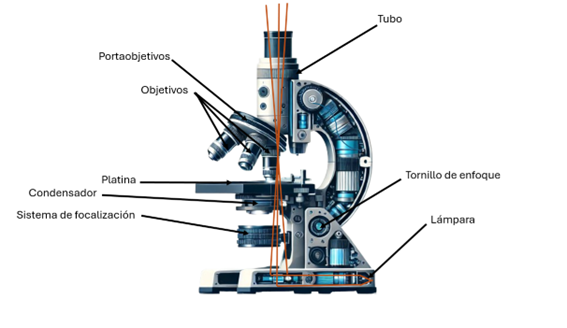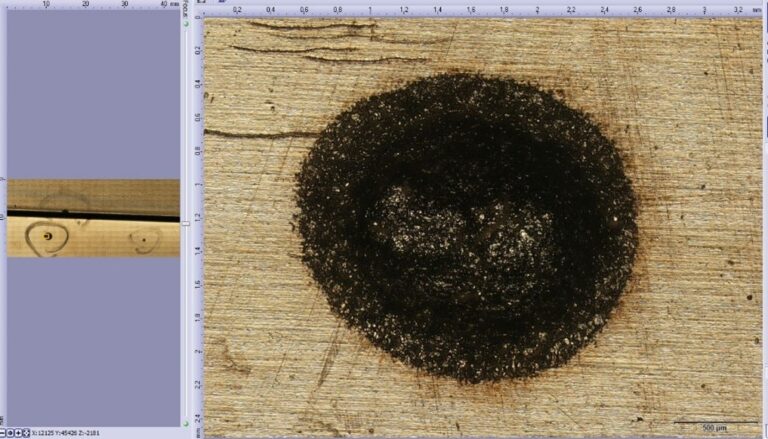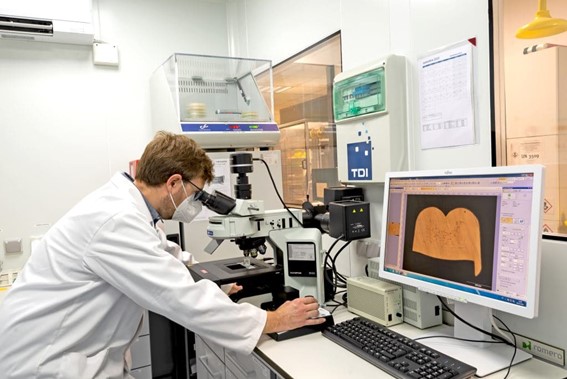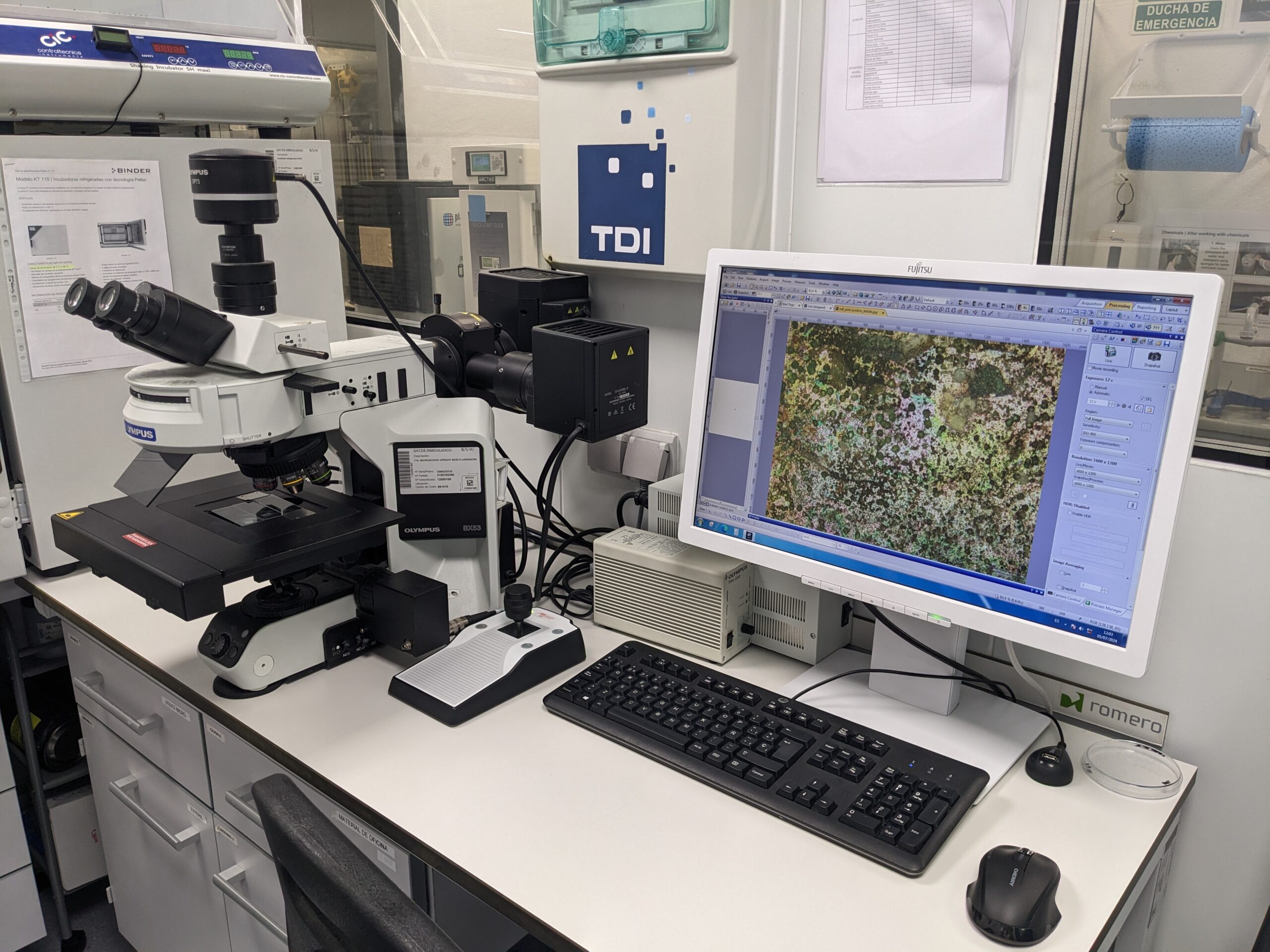What is the Optical Microscope?
The optical microscope is an advanced equipment designed for the observation and detailed analysis of samples in various scientific and industrial disciplines. This microscope uses visible light and a high quality optical lens system to magnify structures and details invisible to the human eye, which is essential in the precise analysis of biological samples, materials and tissues.
The advanced technology of the optical microscope incorporates an LED illumination system, which provides accurate color reproduction and ensures a constant and sharp visualization during the entire observation session.
This equipment is ideal for prolonged studies, as its long-life LED illumination system does not compromise image quality, making it an indispensable tool in biotechnology, quality control, and materials science laboratories.

How does the Optical Microscope work?
The operation of the optical microscope is based on the capture of light passing through or reflected from the sample, which is magnified through a system of lenses and then observed through the eyepieces. This microscope allows the use of interchangeable magnification lenses, ranging from low magnifications for observing general structures to high magnifications for examining minute details.
In addition, the system of intensity and contrast adjustments allows adaptation to different types of samples, from opaque materials to transparent biological samples. This versatility makes the optical microscope an ideal tool for advanced research and quality control analysis.
To interpret the results obtained under the microscope, it is important to follow a few key steps. First, the sample must be prepared and correctly positioned on the microscope stage. Once positioned, the illumination system is adjusted and the appropriate magnification is selected to begin observation. Users can make adjustments to focus, clarity and contrast according to the specific needs of the study.
In addition, many models include options for capturing and storing images, allowing for comparative analysis and accurate documentation of the data obtained, which is crucial in scientific research and quality control processes.

Benefits of the Optical Microscope
One of the main benefits of the optical microscope is its high image quality and ability to adapt to various observation configurations. This allows its use in a wide range of scientific applications, from the analysis of microorganisms to the study of complex materials.
The ability to customize the equipment according to the user’s needs significantly increases its functionality, making the microscope suitable for both routine studies and specialized research.
Optical Microscope Equipment
The Olympus model BX53U is a state-of-the-art optical microscope specifically designed to meet the highest standards of precision and quality in scientific and research studies. This model stands out for its modular system, which allows advanced customization according to the needs of each investigation.
The Olympus BX53U also excels in its ability to integrate with digital systems, enabling the capture and storage of images for later analysis. Thanks to this integration, laboratories can include the BX53U in digital workflows, facilitating the creation of image databases and comparative analysis in research requiring accurate visual documentation.

Optical Microscope Applications
The optical microscope is widely used in a variety of sectors, thanks to its versatility and precision in sample analysis. From quality control in industrial processes to the detailed study of cells and microorganisms in biomedical research, this equipment adapts to the needs of users in different areas.
The following are some of its most important applications:
- Inspection of samples (morphology): The microscope allows the study of the morphology of samples, providing details on shape and structure that are fundamental in multiple disciplines. In the materials industry, for example, it is used to evaluate the surface of materials such as plastics and metals, helping to identify defects or irregularities that could affect the quality and durability of the final product. This is essential in sectors such as automotive and manufacturing, where quality control is a priority.
- Analysis of plastics and metals: The optical microscope’s ability to provide sharp images of surfaces and structures is essential in the analysis of plastics and metals. In these studies, the equipment makes it possible to observe the uniformity and quality of materials, detecting flaws that can compromise their performance in industrial applications. In addition, in strength and durability tests, the microscope facilitates the identification of wear, corrosion and other structural problems.
Analysis of microbiological samples (bacteria, biofilms, fungi): In the field of microbiology, the optical microscope is indispensable for the study of microorganisms such as bacteria, fungi and biofilms. These analyses are essential in medical and biotechnological research, allowing researchers to accurately observe the structures and behavior of microorganisms.
The high resolution and image quality of the equipment enables detailed analysis, which is essential for the advancement of research in health and medicine.
Observation of live cells: In the field of life sciences, the optical microscope allows the observation of live cells in real time, which facilitates the analysis of cellular processes and their responses to external stimuli. This is essential in cell and molecular biology studies, where processes such as cell division, motility, and interaction with different environmental factors are analyzed. The ability to observe these processes in vivo provides valuable information in research related to the development of medical treatments and therapies.
Quality control of manufactured products: In addition to its use in research, the optical microscope is an essential tool in the quality control of manufactured products. Its ability to detect imperfections and defects in materials ensures that products meet the standards required in sectors such as pharmaceuticals, electronics and medical device manufacturing. This application is crucial for maintaining product consistency and quality prior to commercialization.
In conclusion, the Olympus BX53U optical microscope is an advanced instrument that combines precision, flexibility and state-of-the-art technology, adapting to the needs of research and quality control in multiple industries. Its modular design, advanced contrast options and digital integration capabilities make it an essential tool for researchers, forensic engineering analysis, and professionals looking for reliable and high quality results in their analysis.
We show you some examples of the use of the optical microscope in INFINITIA:




